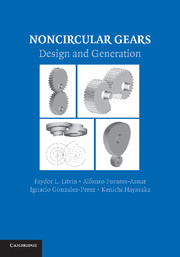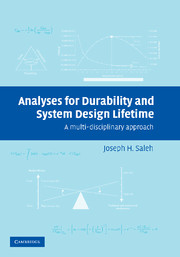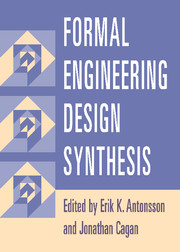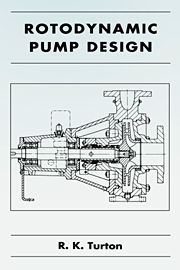Refine search
Actions for selected content:
2002 results in Engineering design, kinematics, and robotics

Noncircular Gears
- Design and Generation
-
- Published online:
- 29 October 2009
- Print publication:
- 14 September 2009

Physical Analysis for Tribology
-
- Published online:
- 29 October 2009
- Print publication:
- 22 February 1991

Analyses for Durability and System Design Lifetime
- A Multidisciplinary Approach
-
- Published online:
- 25 October 2009
- Print publication:
- 10 December 2007

Formal Engineering Design Synthesis
-
- Published online:
- 10 October 2009
- Print publication:
- 19 November 2001

Rotodynamic Pump Design
-
- Published online:
- 29 September 2009
- Print publication:
- 13 January 1994
Acknowledgments
-
- Book:
- Noncircular Gears
- Published online:
- 29 October 2009
- Print publication:
- 14 September 2009, pp xv-xvi
-
- Chapter
- Export citation
1 - Introduction to Theory of Gearing, Design, and Generation of Noncircular Gears
-
- Book:
- Noncircular Gears
- Published online:
- 29 October 2009
- Print publication:
- 14 September 2009, pp 1-17
-
- Chapter
- Export citation
5 - Generation of Planar and Helical Elliptical Gears
-
- Book:
- Noncircular Gears
- Published online:
- 29 October 2009
- Print publication:
- 14 September 2009, pp 71-93
-
- Chapter
- Export citation
11 - Additional Numerical Problems
-
- Book:
- Noncircular Gears
- Published online:
- 29 October 2009
- Print publication:
- 14 September 2009, pp 188-200
-
- Chapter
- Export citation
2 - Centrodes of Noncircular Gears
-
- Book:
- Noncircular Gears
- Published online:
- 29 October 2009
- Print publication:
- 14 September 2009, pp 18-30
-
- Chapter
- Export citation
9 - Transformation of Rotation into Translation with Variation of Gear Ratio
-
- Book:
- Noncircular Gears
- Published online:
- 29 October 2009
- Print publication:
- 14 September 2009, pp 143-146
-
- Chapter
- Export citation
10 - Tandem Design of Mechanisms for Function Generation and Output Speed Variation
-
- Book:
- Noncircular Gears
- Published online:
- 29 October 2009
- Print publication:
- 14 September 2009, pp 147-187
-
- Chapter
- Export citation
3 - Evolutes and Involutes
-
- Book:
- Noncircular Gears
- Published online:
- 29 October 2009
- Print publication:
- 14 September 2009, pp 31-39
-
- Chapter
- Export citation
8 - Application for Design of Planetary Gear Train with Noncircular and Circular Gears
-
- Book:
- Noncircular Gears
- Published online:
- 29 October 2009
- Print publication:
- 14 September 2009, pp 138-142
-
- Chapter
- Export citation
Preface
-
- Book:
- Noncircular Gears
- Published online:
- 29 October 2009
- Print publication:
- 14 September 2009, pp xiii-xiv
-
- Chapter
- Export citation
6 - Design of Gear Drives Formed by Eccentric Circular Gear and Conjugated Noncircular Gear
-
- Book:
- Noncircular Gears
- Published online:
- 29 October 2009
- Print publication:
- 14 September 2009, pp 94-114
-
- Chapter
- Export citation
Index
-
- Book:
- Noncircular Gears
- Published online:
- 29 October 2009
- Print publication:
- 14 September 2009, pp 203-204
-
- Chapter
- Export citation
Contents
-
- Book:
- Noncircular Gears
- Published online:
- 29 October 2009
- Print publication:
- 14 September 2009, pp vii-x
-
- Chapter
- Export citation
4 - Elliptical Gears and Gear Drives
-
- Book:
- Noncircular Gears
- Published online:
- 29 October 2009
- Print publication:
- 14 September 2009, pp 40-70
-
- Chapter
- Export citation
References
-
- Book:
- Noncircular Gears
- Published online:
- 29 October 2009
- Print publication:
- 14 September 2009, pp 201-202
-
- Chapter
- Export citation
